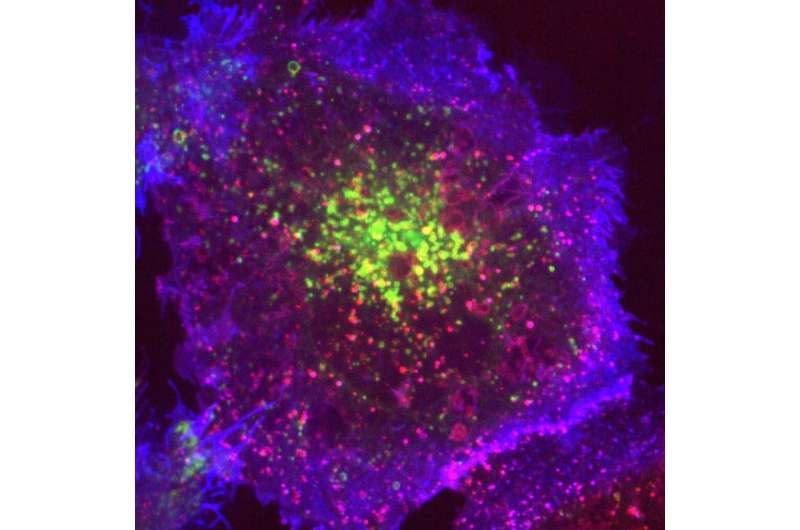Scientists create endocytosis on demand by 'hotwiring' cells

A solution to the problem of creating endocytosis on demand is being compared to 'hotwiring' a car.
A team at Warwick Medical School, University of Warwick, has managed to trigger clathrin-mediated endocytosis in the lab. They did it by using a chemical rapamycin which diffuses in to the cell allowing them to trigger endocytosis to occur all over the cell. Their study New Tools for 'Hot-Wiring' Clathrin-Mediated Endocytosis with Temporal and Spatial Precision has just been published in The Journal of Cell Biology.
Endocytosis is very important to the cell, for example it allows cells to import nutrients to live and controls cell movements, growth and how cells 'talk' to one another. Cell biologists have studied for decades how endocytosis works however up till now they have found it impossible to control the process.
The team was led by Dr Stephen Royle reader and senior Cancer Research UK fellow at Warwick Medical School said: "We've compared our method to 'hot-wiring' a car. When this happens in the movies, a bad guy breaks into a car and just twists some wires together to start the car and make a getaway.
"To trigger endocytosis we used the cell's own proteins, but we modified them. We chopped out all the unnecessary parts and just left the bare essentials. We call the process of triggering endocytosis 'hot-wiring' because it is similar to just twisting the wires together rather than having a key.
"It turns out that movies are not like real life, and hot-wiring a car is actually quite difficult and takes a while. So our systems are more like the Hollywood version than real life!"
The team also solved the problem of knowing where endocytosis will happen on the cell. This was done by engineering a light-sensitive version of their system. With this new version they used blue light to trigger endocytosis. Whereas the chemical across the cell the light can be focused in a narrow region causing endocytosis to be triggered only in that region. This allows the team to control where, as well as when, a vesicle that carries nutrients will form.
The new method will allow cell biologists to accurately study the timing of endocytosis and what proteins are required. It also potentially means that molecules can be delivered to cells that they cannot normally enter. Eventually scientists may be able to 'force feed' cells with whatever they want, such as drugs or nanoparticles that are not actively taken up by cells.
More information: Laura A. Wood et al. New tools for "hot-wiring" clathrin-mediated endocytosis with temporal and spatial precision, The Journal of Cell Biology (2017). DOI: 10.1083/jcb.201702188
Journal information: Journal of Cell Biology
Provided by University of Warwick

















